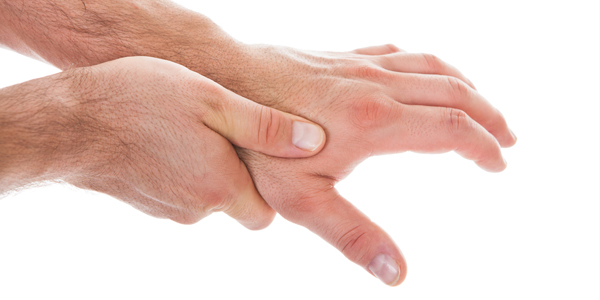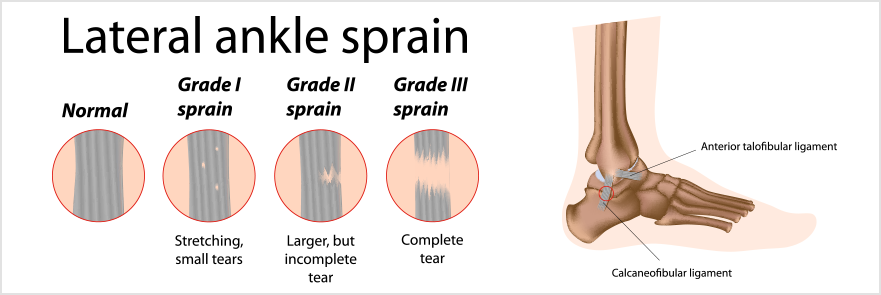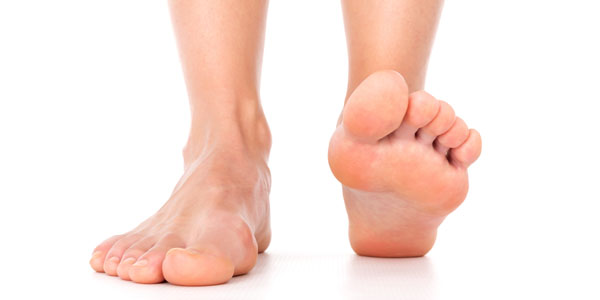Sprains
Sprains
What is a Sprain?
A sprain is the overstretching or tearing of a ligament (fibrous tissue that connects two bones together) caused by a sudden or severe twist.
Causes | Symptoms | Severity | Treatment | Prevention
What Parts of the Body Can You Sprain?
Sprains tend to happen in areas where there is movement. The most common types of sprains are:
Big Toes
Known as “turf toe,” sprains of the big toe are common in football, wrestling, gymnastics, and other sports.

Ankles
Ankle sprains are very common with the ankles being the body part second most likely to be injured during sports.

Fingers
“Jamming” your fingers or bending them back too far are common causes of sprains in the fingers.

Knees
The ligaments of the knee (ACL, PCL, LCL, and MCL) are often injured in sports, especially basketball and football.

Wrists
Wrist sprains are common among athletes and are usually caused by falling on an outstretched hand.

Thumbs
Sprained thumbs are an incredibly common skiing injury so frequent that thumb sprain injuries are known as “skier’s thumb.”
What is a Ligament?
Ligaments are short, tough bands of fibrous connective tissue that connect bones to other bones around joints all over your body.
Ligaments hold our joints in place and limit or prevent certain movements.
They should not be confused with tendons, which attach muscle to bone and are springier.
Ligaments are like rubber bands, in that they are tough but have elastic qualities, which when injured can cause them to stretch or even tear.
What is the Difference Between a Sprain and a Strain?
A sprain is the overstretching or tearing of ligaments.
A strain is the stretching or tearing of muscles or tendons.
Sprains and strains often present with similar symptoms. However, sprains typically happen in ankles and wrists while strains occur more frequently in the low back and hamstring.
What Causes a Sprain?
A sprain is caused when you overextend or move the joint beyond its normal range of motion.
Common causes of sprains include:
- Walking, running, or jogging on an uneven surface
- Turing sharply or pivoting during sports
- Falling on an outstretched hand
- A direct hit to a joint
How Bad Can Sprains Be?
There are three different degrees of sprains that range in severity from mild to severe.

First-degree Sprain (Mild)
In a first-degree sprain, the fibres of the ligament are stretched and may tear slightly.
The ligament is still intact, and your joint will feel stable, but you might have swelling and pain.
Second-degree Sprain (Moderate)
In a second-degree sprain, the ligament fibres are partially torn but still intact.
The joint will be tender & swollen, and will feel loose.
Third-degree Sprain (Severe)
In a third-degree sprain, the fibres of the ligament are completely torn (known as a rupture).
This level of sprain can feel like a broken bone, as it will be nearly impossible to put any weight on the joint.
What are the Signs and Symptoms of a Sprain?
Depending on the severity of your sprain, you may feel a variety of symptoms, including:
- Pain
- Swelling
- Tenderness
- Bruising
- Looseness in the joint
- Unable to move the joint
- Hearing or feeling a “pop” during the injury
If you experience muscle spasms and are unable to move the affected muscles, then you most likely have a muscle strain, not a sprain.
Concerned about symptoms of a sprain ? Find a physiotherapist near you and book an assessment today.
Should You See a Doctor About a Sprain?
If you think you have sprained a ligament and have suffered a severe injury, an appointment with your doctor may be necessary.
See your doctor if you have the following symptoms, as they may be a sign of a more serious problem:
- Can’t walk more than a few steps without significant pain
- Can’t move the injured joint
- Have pain directly over the bones of the affected joint
- Have any numbness in the injured limb
How are Sprains Treated?
For the most part, you can treat mild sprains at home and seek physiotherapy to help fully recover.
If your sprain is mild to moderate, you can ease your sprain symptoms at home using the RICE protocol:
- Rest the injury for 24 hours, avoid activities that could further injury or aggravate the joint
- Ice the injured area one to three times a day 15 to 20 minutes at a time
- Compression is used to control swelling by applying a compression bandage
- Elevation of the limb above the level of the heart to help relieve swelling
If your sprain symptoms do not improve with these at-home remedies, you may want to consult with a pt Health physiotherapist for a custom treatment plan to address your unique concerns.
Physiotherapy for Sprains
While sprains can be successfully treated at home, physiotherapy is recommended to help strengthen the affected area to prevent future injury and, in some cases, low back pain.
When you sprain a ligament, it can become weak and unstable increasing your chances of spraining the same area again and again.
Depending on how bad the sprain is, a physiotherapist includes any of the following in your treatment plan:
- Manual therapy
- Range of motion and flexibility exercises
- Balance and control exercises
- Personalized exercise plan
- Stretching and strengthening exercises
- Taping or bracing the affected area
Will a Sprain Heal On Its Own?
Yes and no: people who have suffered a sprain are 70% more likely to sprain the same ligament again.
So while home remedies, like the RICE protocol, can ease symptoms and help you recover, the ligaments can be weakened making you more likely to sprain it again.
Can You Prevent a Sprain?
Yes: the best way to prevent a sprain is to keep yourself in good physical condition.
Stretching and strengthening exercises should be done regularly as part of an overall fitness plan.
If you play sports or have a physically demanding job, speak to a physiotherapist about the best exercises for your activities.
Book a Physiotherapist Consult for A Sprain Today
Have you suffered a recent sprain and are seeking treatment? Book an assessment with a physiotherapist today.

